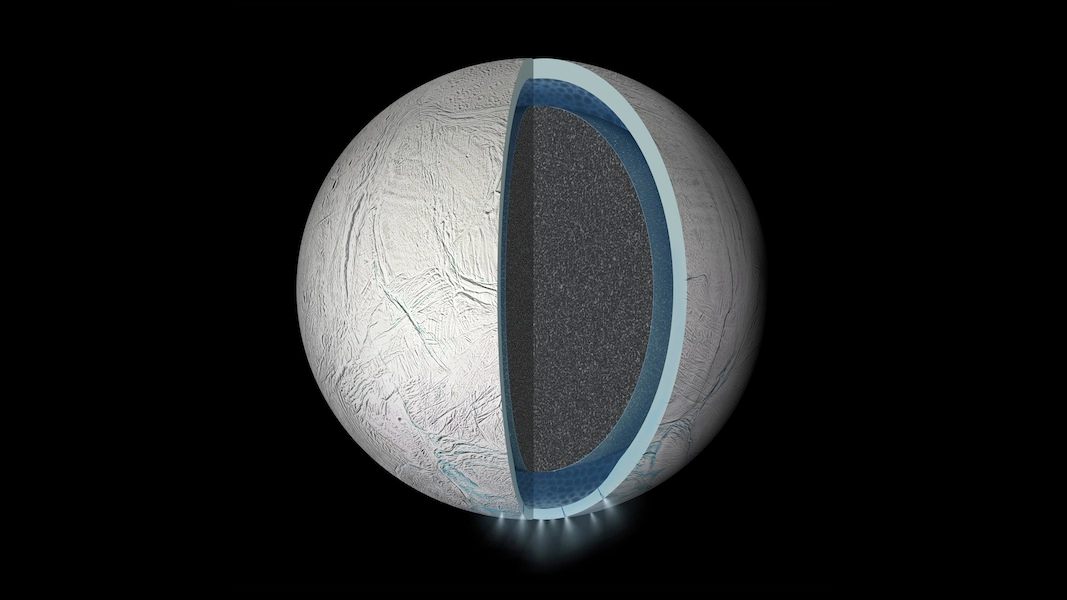FOUND: A Moon Ocean

An illustration of Enceladus’ interior (Photo: NASA/JPL-Caltech)
Of Saturn’s 62 moons, Enceladus is not the largest (it’s sixth in line) or the weirdest. But it is the one that gives scientists the greatest hope of finding extraterrestrial life. And a new finding from NASA makes that an even more likely possibility: under its icy surface, there’s an ocean that covers the entire moon.
Enceladus was first discovered in 1789, but it’s only in the past decade, when the Cassini mission started doing regular passes of the moon, that we learned much about it. In 2005, the spacecraft found an intriguing feature—a plume of water vapor and ice spouting from the moon’s southern pole. Last year, NASA’s Jet Propulsion Laboratory announced that they’d found a possible source for that plume. The data Cassini had collected was consistent with Enceladus having a “hidden ocean.” The NASA scientists thought the ocean would be about six miles deep, but possibly cover just one region of the moon.
But now, having analyzed seven years of images of Enceladus, NASA scientists have concluded that the moon’s subtle wobble could only be caused by an ocean that covered the whole moon. Enceladus has a rocky core and an icy surface; the surface has to be separate from the core to explain the wobble. Scientists believe it’s a liquid ocean that separates them.
A global ocean also explains the source of Enceladus’ vents. And it makes it that much more reasonable that the moon could host some form of life.
Bonus finds: A fossilized flea, Poland’s oldest stone wall
Every day, we highlight one newly lost or found object, curiosity or wonder. Discover something unusual or amazing? Tell us about it! Send your finds to [email protected].









Follow us on Twitter to get the latest on the world's hidden wonders.
Like us on Facebook to get the latest on the world's hidden wonders.
Follow us on Twitter Like us on Facebook